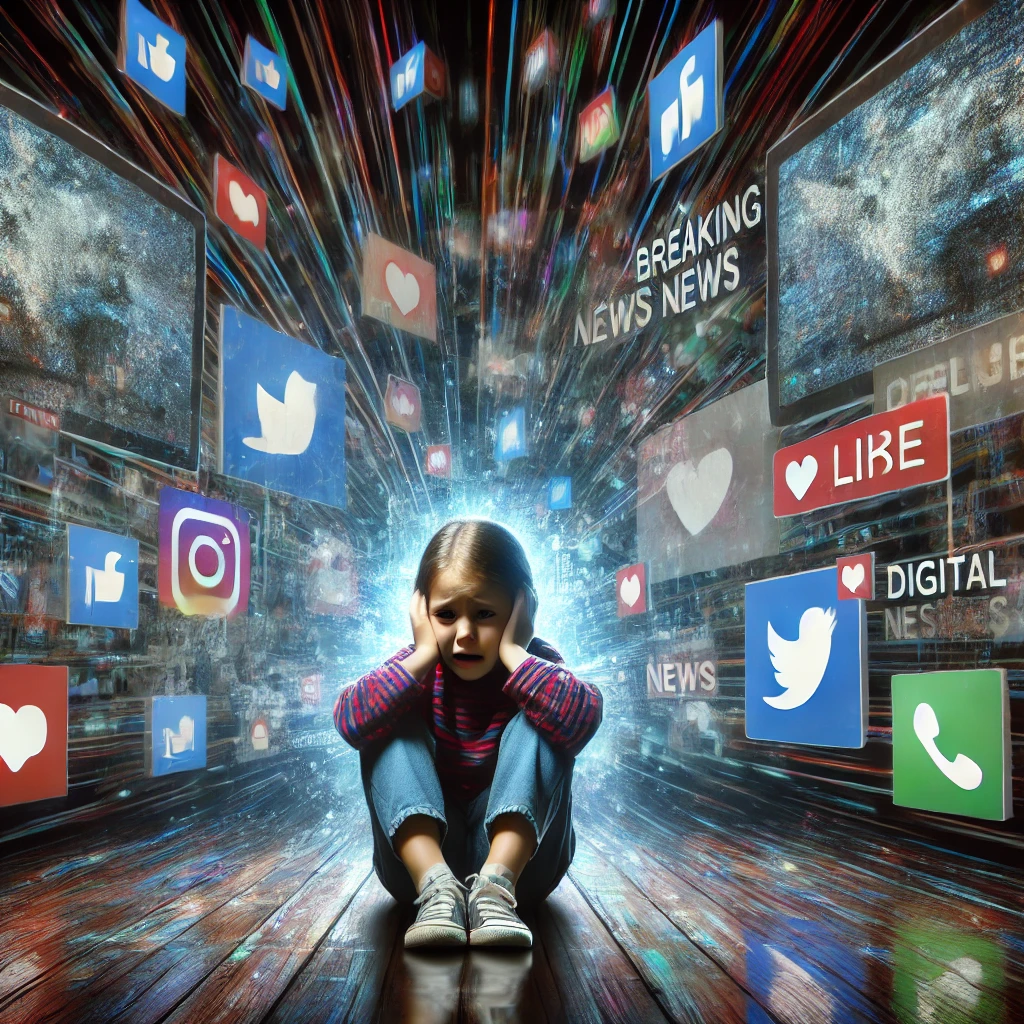The Impact of Digital Content on Childhood Anxiety its signs, causes and solutions: What Parents Need to Know
“It’s not how long we’re using screens that really matters; it’s how we’re using them and what’s happening in our brains in response,” says Rich, director of the Center on Media and Child Health at Boston Children’s Hospital, associate professor of paediatrics at HMS, and associate professor of social and behavioural sciences at the Harvard T.H. Chan School of Public Health.
During the Covid pandemic most of the people were doing work from home, Daycares were closed, all physical activities were stopped and all schools shifted to online classes. At that time, we saw a rising trend in the increased screen time not only in the children but also in the adults which was associated to increased level of anxiety. But even after the Covid we have seen the rising trends in the excessive use of mobile phone in the children.
Children in the developing age, their brain is constantly building new neural connections while pruning away the less used one and social media has a strong impact on that. The children need to have a diverse menu of online and offline experience to let their brains wander and grow properly.

The American Academy of Pediatrics’ (AAP) gives the guidelines for the children for children screen time: American Academy of Pediatrics
Infants Under 18 Months: Parents should avoid screen time, except for video chatting. At this the physical interaction helps most in brain development.
Children Aged 18 to 24 Months: If you are introducing digital media make sure to keep a check on children and provide them with the quality content. Co viewing helps in their comprehension and Learning.
Children Aged 2 to 5 Years: The parents should limit the screen time to one hour per day of quality content and co viewing is encouraged to help children understand what they are viewing.
Children Aged 6 Years and Older: There should be a constant limit to screen time to make sure that it is not interfering with sleep, physical activity, and other healthy behaviours. Focus should be on the quality content and balance with the other activities.
Signs of anxiety in children related to use of social media:
Sleep disturbances: They have a disturbance with their sleep pattern and timings. Children over six years of age need up to 12 hours of sleep over a 24-hour period, but the excessive use of social media is disturbing it.
Low energy: Due to lack of sleep they are unable to focus on anything and it leads to low energy during the day and a dampened mood.
Social media makes them emotional: If your child is becoming irritable, anxious or irritable over the small things you need to check it might be because of social media.
They want to be alone: If parents notice that their children are retreating to their rooms more than usual and spending more time in their room? it might be because of digital media they are using in their rooms.
They refuse to share passwords: Parents should be concerned if their children refuse to share their social media passwords. According to research by the Children’s Commissioner’s Office, 45 percent of the children aged 08 to 17 have seen content that was inappropriate or made them worried or upset.
Reduced attention span: Tiktok brain is the real phenomena by the excessive usage of short videos platform children are unable to focus on anything for a longer period. This is seen in the children who use these platforms have significantly decreased attention span.
Declining school performance: Increase in screen time leads to decrease in the attention span and inability to focus on anything so there is a significant decline in the school performance of the children who use social media excessively.

Strategies for parents:
It is clear that Screen time must cut down, but the question is how we can cut it down and about what you might do instead.
- Play board games. If you feel like it, change the rules (which may make them more accessible for younger children). You can even make up your own board game
- Bake! There’s nothing like making sweets to make everyone happy.
- Paint and draw
- Build things — from blocks, cardboard, anything
- Read books with actual pages. Graphic novels and comic books count.
- Play instruments. Virtual lessons — and free online tutorials — are available.
- Encouraging sports and playing with them their favorite sports.

Conclusion:
There is increased amount of anxiety and restlessness in children due to excessive use of digital media that is not an issue that parents can deny or turn a blind eye to it as if they don’t take necessary steps now it will lead to some serious health conditions with hazardous effects. So, it is advisable to cut down the social media usage by adopting the appropriate alternative measures.
The article discusses how excessive exposure to digital content contributes to childhood anxiety, citing signs such as social withdrawal, sleep issues, and difficulty concentrating. It examines causes like cyberbullying, unrealistic online comparisons, and overstimulation. Solutions emphasize balanced screen time, fostering open communication, and promoting healthy offline activities. Parents are advised to monitor digital consumption, encourage educational content, and co-view with their children. The piece underscores the role of a supportive environment in building resilience against anxiety-related triggers.
Good one
I appreciate the dedication you put into offering all the necessary information.